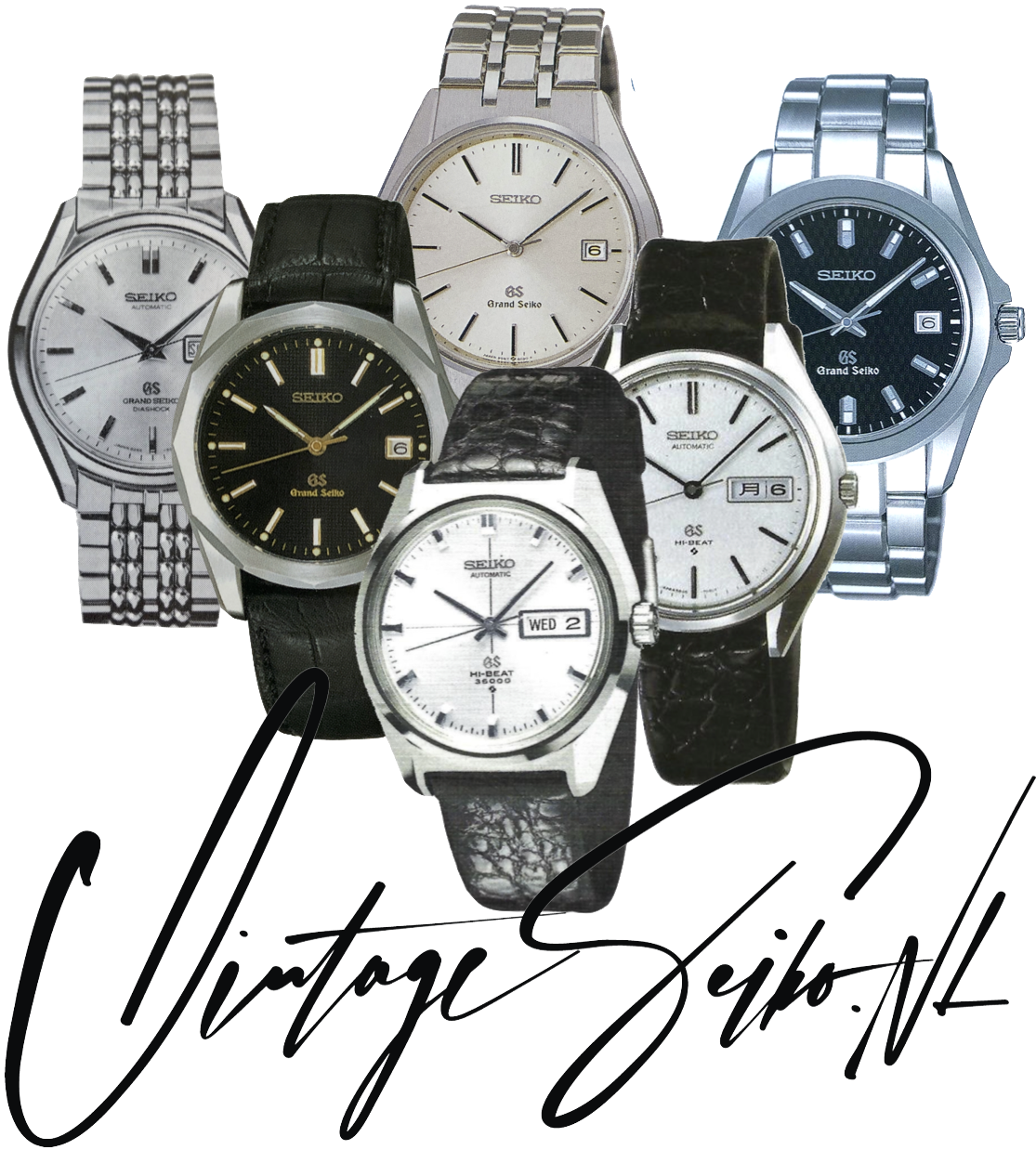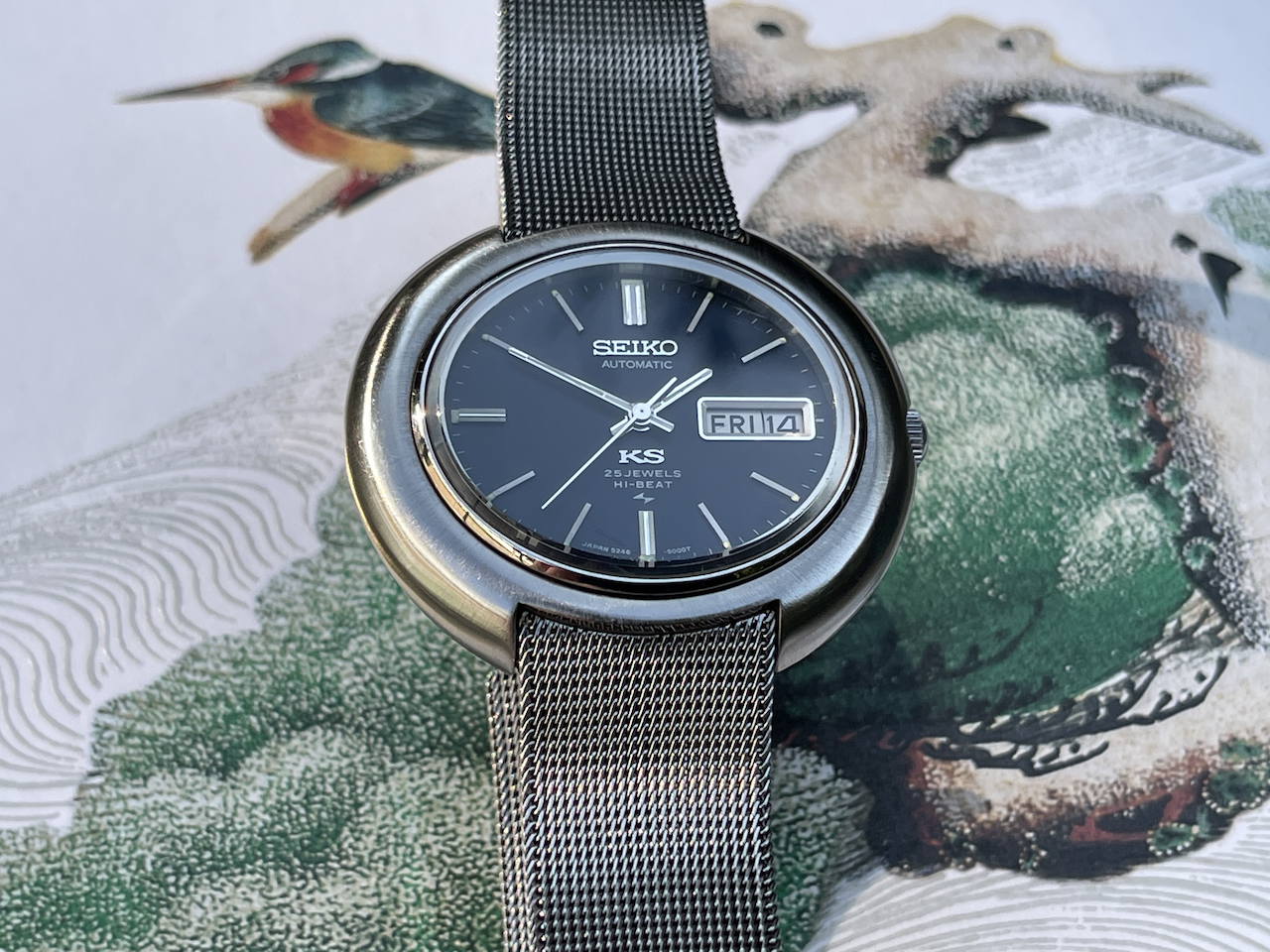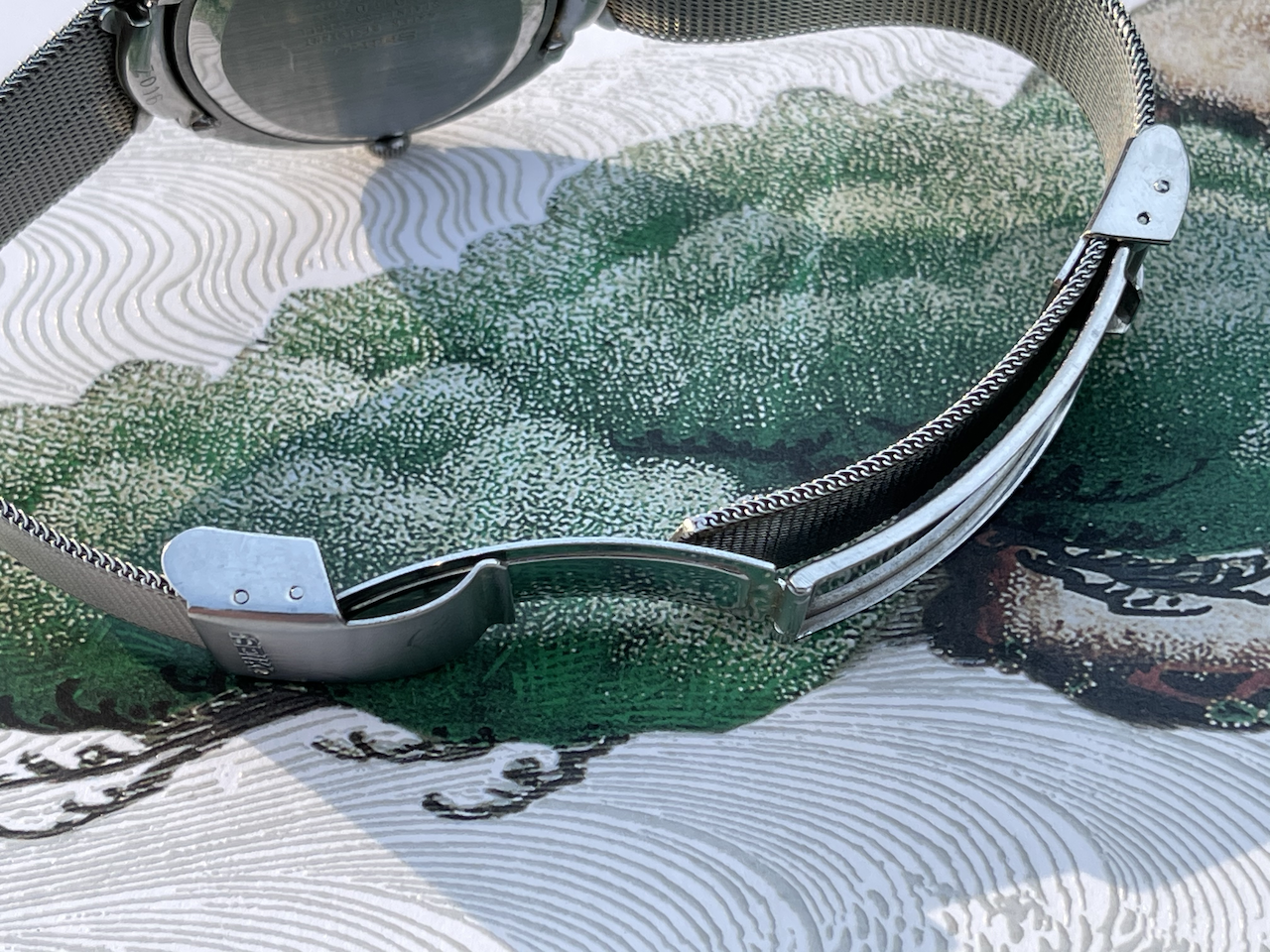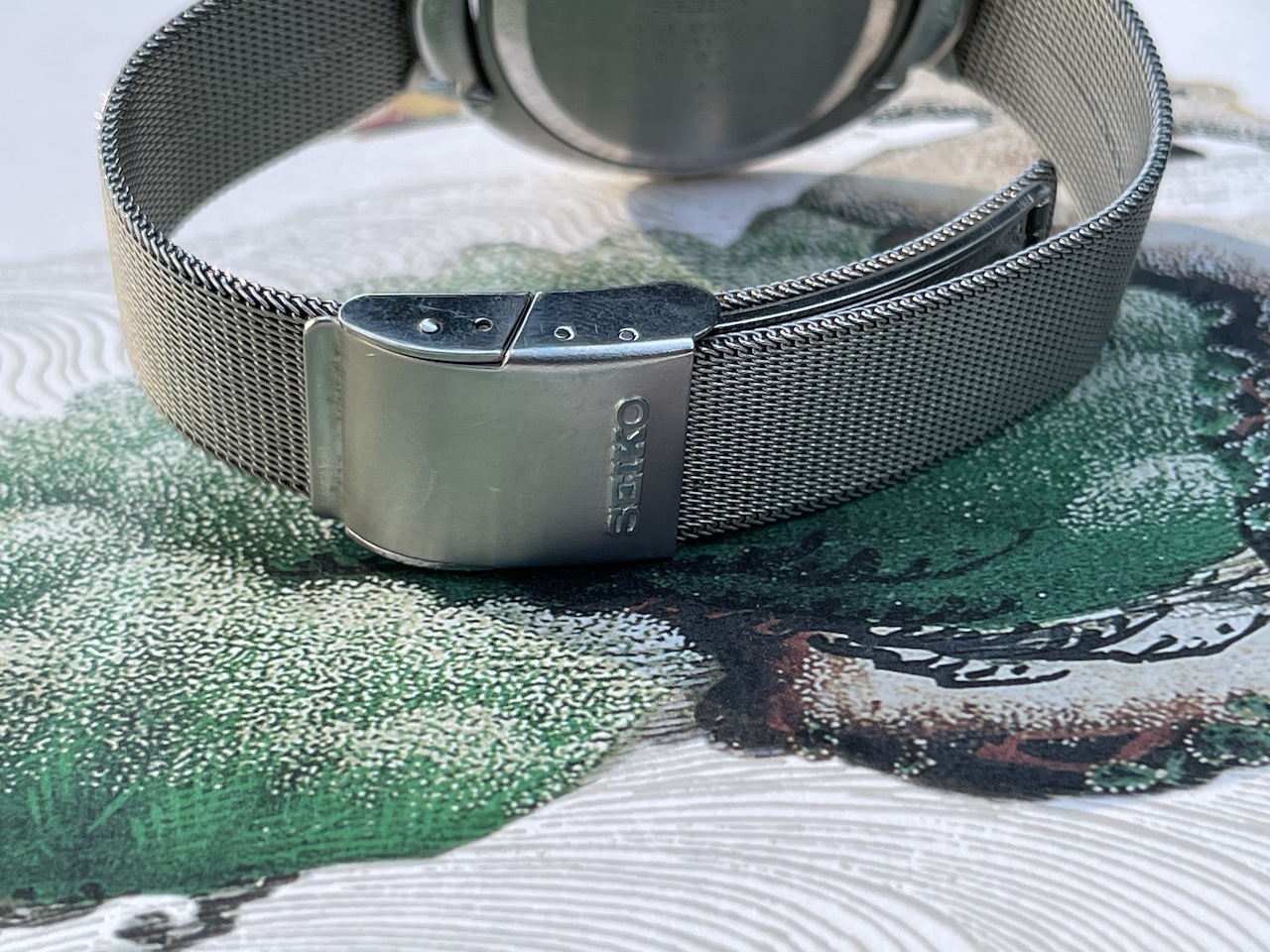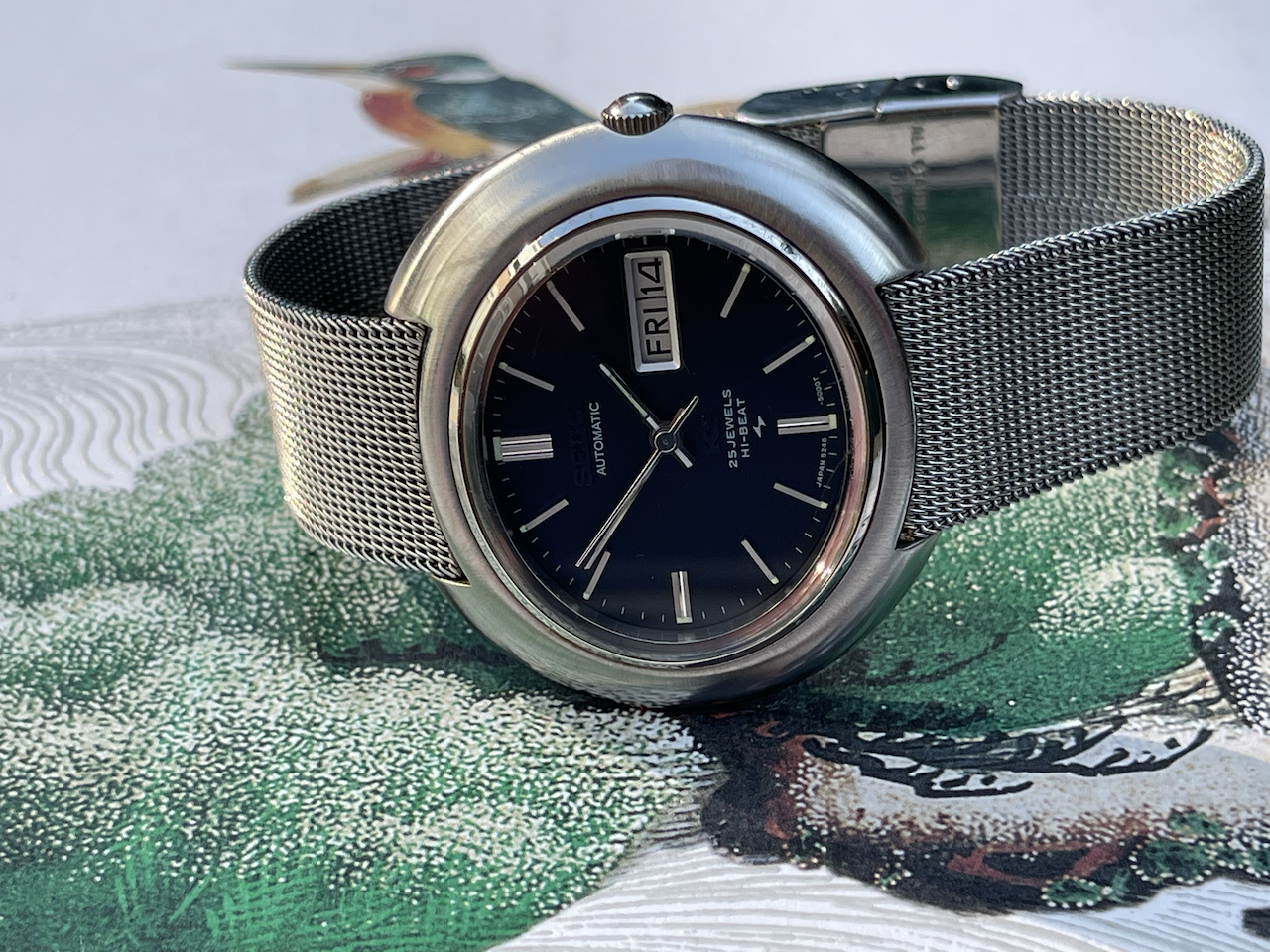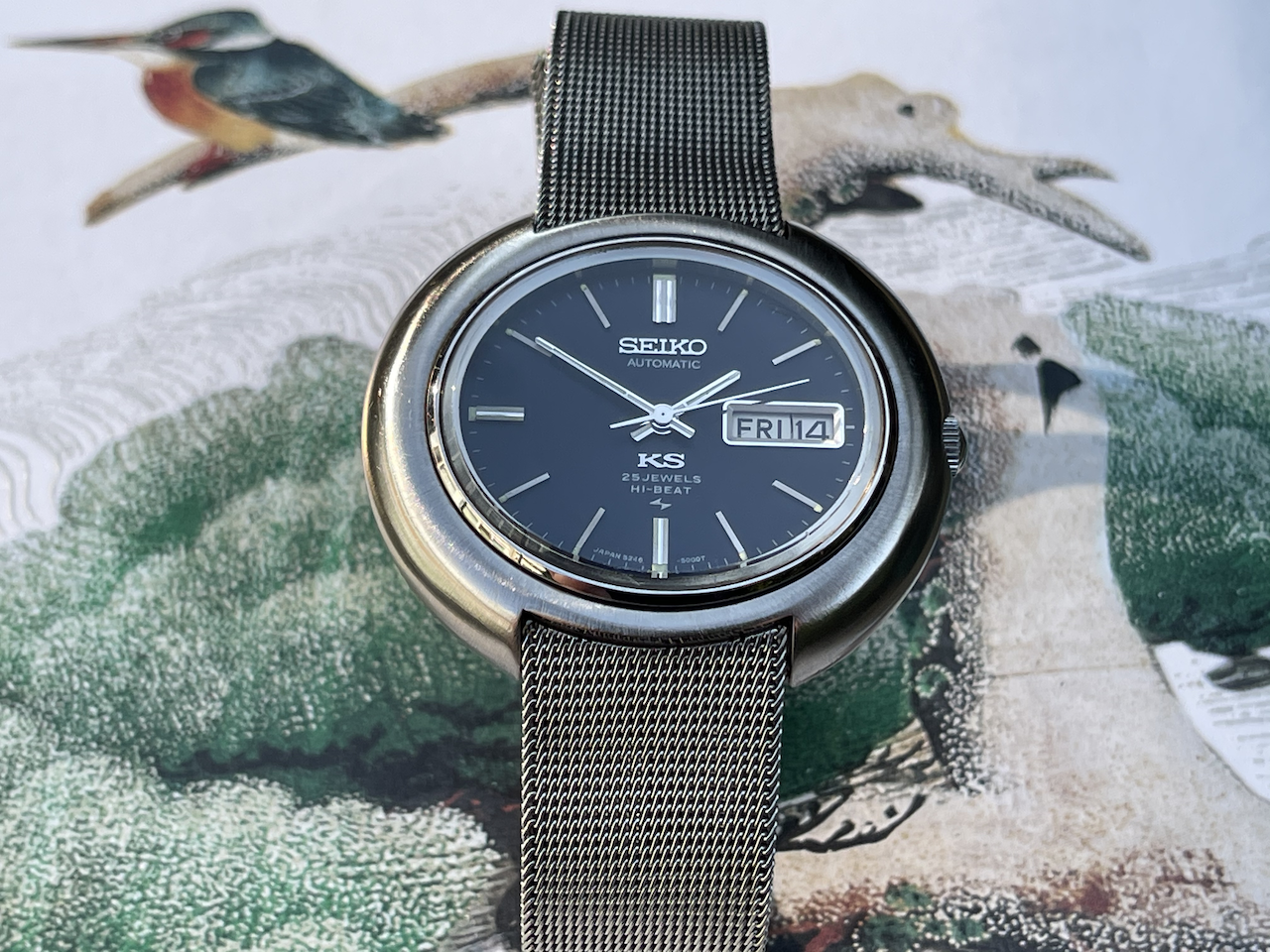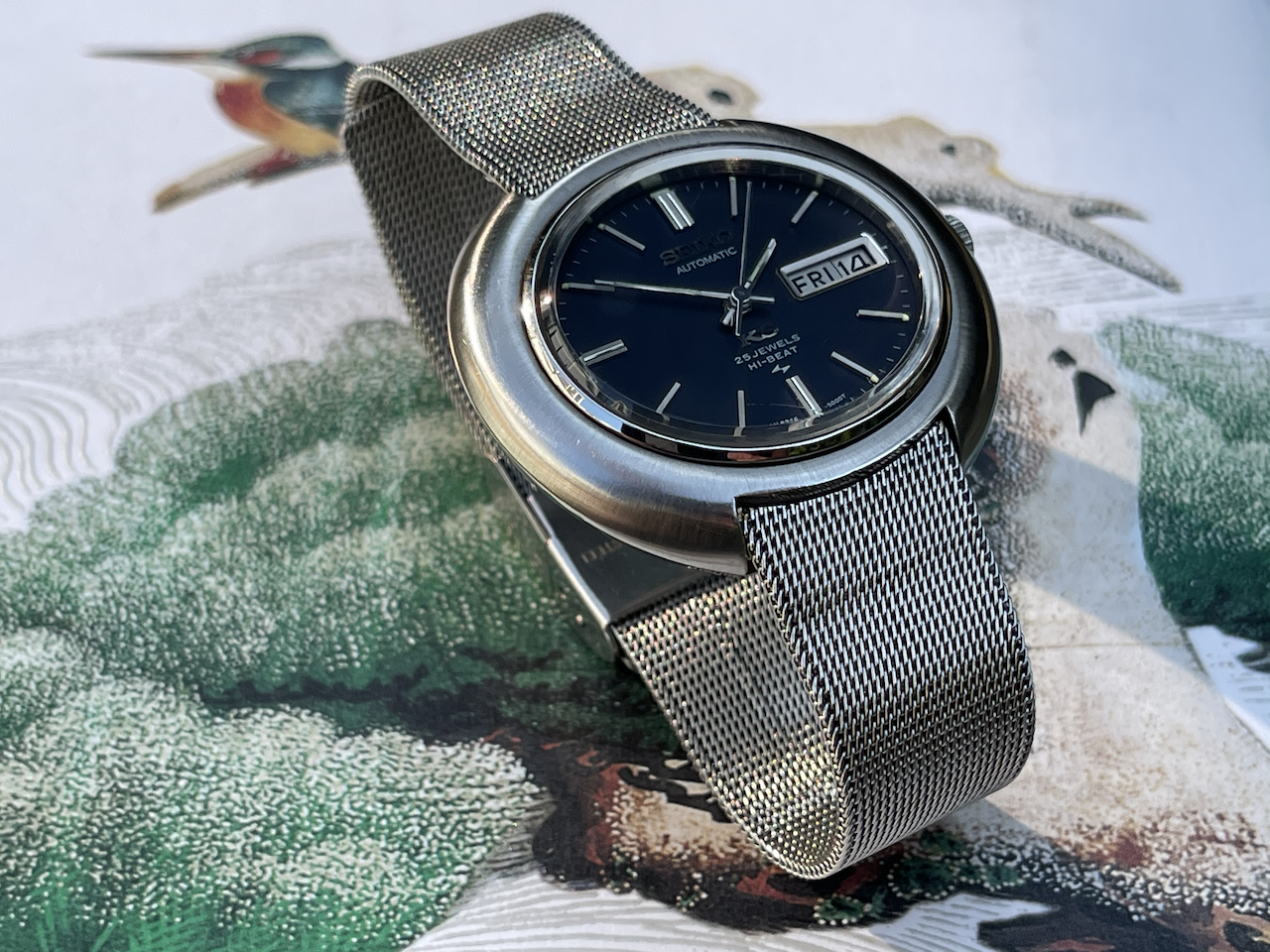
King Seiko 5246-5000 (Sold)
€ 500.00
Sold out
| About | Details | and then some |
|---|---|---|
| Manufacture | Seiko | King Seiko |
| Model reference | Unknown | 5246-5000 |
| Movement | Automatic | |
| Caliber | 5246 | |
| Dial | Blue Navy | |
| Case | 41x35x09mm | Steel |
| Lugs | 18mm | |
| Bracelet | Original | 22cm |
| Crystal serial # | Unknown | Hardlex |
| Timegrapher | Accuracy:+tbe | |
| Jewels | 25 | |
| Serial # | 29xxxx | Production: 1972-09 |
| Condition | Excellent | |
| Service | Not required | |
| Box & Papers | No box | No papers |
The King Seiko Vanac was manufactured between 1972 and 1974 only, but in a large number of variations, all sporting colorful dials, facetted crystals and angular cases. Both Seiko production plants contributed, Suwa with the standard KS 5626 Hi-Beat caliber and Daini with the 5246 Special and 5256 Hi-Beat calibers that exist in some normal King Seikos but are most common as Vanacs. Make no mistake however, these movements are totally different movements from the ground up. The 52KS is an indirect center seconds mechanism still seen today in more expensive movements from Jaeger LeCoultre, Patek Phillipe and some Piguets. In less expensive movements like the 5626 KS, due to its inherent complexity and cost indirect center seconds was not used.
A "regular" Vanac is essentially a KS with added extras: faceted glass, a gold bezel, a high quality bracelet (no folded metal links here) and drilled lugholes (but not all). The KS Vanac JDM (Japanese Domestic Model) was second only to the Grand Seiko as top of the line Seiko during the 1960’s and 70’s. Arguably the 5256 Vanac Special was its equal. Pricing reflects that as that Special could cost you close to a 1000 euro.
Be that as it may, with their thicker 52 movement inside these watches were ideally suited to get you to the next level of Seiko's horological achievements, because let's be clear, that (extended) indirect seconds pinion now ran through a hollow center wheel pinion (!) to carry the seconds hand in the center of the movement where the minute and hour hand already resided.. The inner mechanics to drive that sophistication are in itself another story of brilliant inventions. It is where the 52 leaves the 56 behind.
There were essentially five movement options in the King Seiko line:
- 5246A/5246B (1968-1974) - Day/date
- 5256A/5246B (1968-1974) - Day/date
- 5621A/5621B (1969-1974) - Time only
- 5625A/5625B (1968-1975) - Date
- 5626A/5626B (1968-1974) - Day/date
These were produced in "A" (unregulated) and "B" (regulated) grades, with some being "Special" movements moving up to the next standard of accuracy - denoted by the third digit 4 and even 5. All "B" movements were chronometer grade, with many receiving official certification, as noted on the dial.
The later and now much rarer versions of the KS were in the Vanac line, the funky mod line of the early 1970’s. Make no mistake however, the regular kings had some contributions too (like this one).
Of course much of what has been said about automatic King Seikos could also be said about automatic Grand Seikos and even some of the Lordmatic (LM) models of the same period. The LM range also used both the 56xx and 52xx movement streams (although lower grade versions, and in the case of the 5606 lower beat), while many Grand Seikos of the period used the 56xx stream.
Even though the GS 56xx movements were numbered 564x rather than 562x indicating a higher quality and/or level of adjustment, the accuracy it is possible to achieve from 562x KS movements suggests to me that if serviced and adjusted, they are effectively equal to the GS 564x ones. So in this sense, vintage automatic King Seikos may practically be the equivalents of Grand Seikos, but offer better value for money because of the ongoing status of the Grand Seiko label - whereas the KS label is now purely historical.
